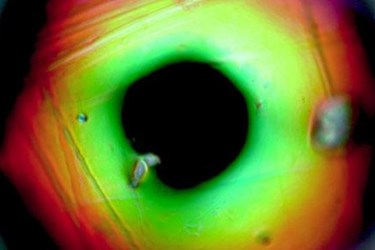Nanophotonics: The Key To A New Generation Of Medical Diagnostic Devices?
By Joel Lindsey

Researchers at the University of Cambridge are working to develop new medical diagnostics devices that harness the potential power of nanophotonic, a field of physics concerned with the interactions between light and interacts with materials as small as a billionth of a meter.
“We’re starting to learn how we can make materials that respond optically to the presence of individual molecules in biological fluids,” Jeremy Baumberg, professor of nanophotonics in Cambridge’s Department of Physics, said in a news article on the university’s website. “There’s a large demand for this. GPs would like to be able to test the patient while they wait, rather than sending samples away for clinical testing. And cheap and reliable tests would benefit developing countries that lack expensive diagnostic equipment.”
Baumberg and his team have focused on attempting to measure the optical signatures of molecules as a way of identifying what specific substances are present in a biologic sample. To do this, they created a barrel-shaped molecular container they call cucurbituril (CB) that allows a single molecule to enter into it, effectively isolating that molecule from all the other molecules around it. The CB would be combined with tiny amounts of gold molecules, which would help enhance the entire unit’s reaction to light.
“Shining light onto this gold-barrel mixture focuses and enhances the light waves into tiny volumes of space exactly where the molecules are located,” Baumberg said. “By looking at the colors of the scattered light, we can work out which molecules are present and what they are doing, and with very high sensitivity.”
At this point, the research team has begun looking for ways to use their CB-gold “plasmonic sensors” to create usable devices for analyzing bodily fluids like urine or tears, according to the press release.
Researchers involved with the project also said that, unlike more traditional diagnostic techniques that rely on expensive equipment and precise laboratory conditions, nanophotonics-based devices could be reliable, relatively inexpensive, and capable of delivering accurate diagnoses quickly, all of which could carry important implications for medical field work and healthcare in remote or economically underprivileged areas.
“We want to understand how we can go further with the technology, from controlling chemical reactions happening inside the barrel, to making captured molecules inside ‘flex’ themselves, and detecting each of these modifications through color change,” Baumberg said. “The ability to look at small numbers of molecules in a sea of others has appealed to scientists for years. Soon we will be able to do this on an unprecedented scale: watching in real time how molecules come together and undergo chemical reactions, and even how they form a bond.”
Image credit: Gen Kamita and Jeremy Baumberg
